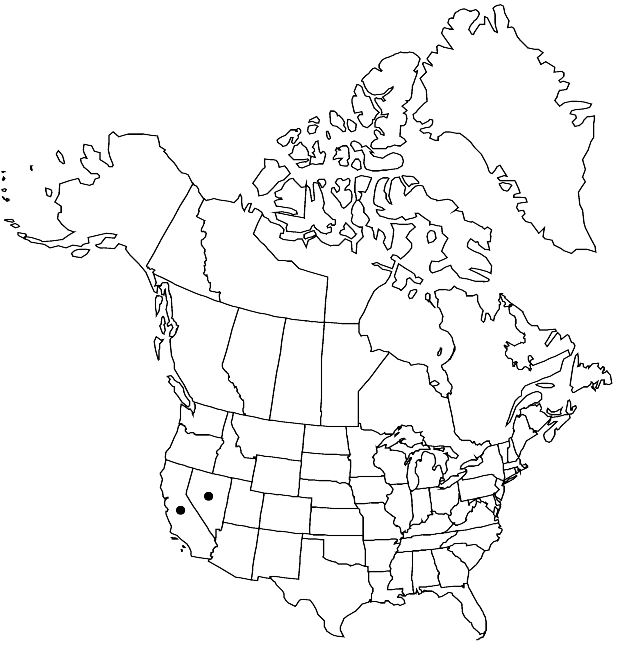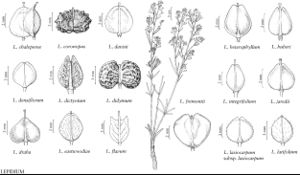Difference between revisions of "Lepidium flavum"
in War Department [U.S.], Pacif. Railr. Rep. 4(5): 67. 1857.
FNA>Volume Importer |
imported>Volume Importer |
||
| (One intermediate revision by the same user not shown) | |||
| Line 1: | Line 1: | ||
{{Treatment/ID | {{Treatment/ID | ||
|accepted_name=Lepidium flavum | |accepted_name=Lepidium flavum | ||
| − | |accepted_authority=Torrey | + | |accepted_authority=Torrey |
|publications={{Treatment/Publication | |publications={{Treatment/Publication | ||
|title=in War Department [U.S.], Pacif. Railr. Rep. | |title=in War Department [U.S.], Pacif. Railr. Rep. | ||
|place=4(5): 67. 1857 | |place=4(5): 67. 1857 | ||
|year=1857 | |year=1857 | ||
| + | }} | ||
| + | |special_status={{Treatment/ID/Special_status | ||
| + | |code=F | ||
| + | |label=Illustrated | ||
}} | }} | ||
|basionyms= | |basionyms= | ||
| Line 56: | Line 60: | ||
-->{{#Taxon: | -->{{#Taxon: | ||
name=Lepidium flavum | name=Lepidium flavum | ||
| − | |authority=Torrey | + | |authority=Torrey |
|rank=species | |rank=species | ||
|parent rank=genus | |parent rank=genus | ||
| Line 69: | Line 73: | ||
|publication title=in War Department [U.S.], Pacif. Railr. Rep. | |publication title=in War Department [U.S.], Pacif. Railr. Rep. | ||
|publication year=1857 | |publication year=1857 | ||
| − | |special status= | + | |special status=Illustrated |
| − | |source xml=https:// | + | |source xml=https://bitbucket.org/aafc-mbb/fna-data-curation/src/2e0870ddd59836b60bcf96646a41e87ea5a5943a/coarse_grained_fna_xml/V7/V7_938.xml |
|tribe=Brassicaceae tribe Lepidieae | |tribe=Brassicaceae tribe Lepidieae | ||
|genus=Lepidium | |genus=Lepidium | ||
Latest revision as of 22:37, 5 November 2020
Annuals; glabrous. Stems few to several from base, prostrate or decumbent, branched, (0.2–)0.4–3(–4.6) dm. Basal leaves rosulate; petiole (0.3–)0.6–2.5(–3.2) cm; blade spatulate to oblanceolate or linear, pinnatifid or lobed (lobes 3–9 pairs, ovate to oblong), (0.7–)1.3–5.2(–6) cm × 3–8 mm, margins (of lobes) entire. Cauline leaves: petioles 0.1–0.5 cm; blade obovate to spatulate or oblanceolate, (0.6–)1–1.8(–2.3) cm × 2–8(–14) mm, base attenuate-cuneate, not auriculate, margins dentate-sinuate to crenate orentire. Racemes (corymbose to subcapitate), slightly elongated in fruit; rachis glabrous. Fruiting pedicels divaricate to horizontal, straight or slightly sigmoid, (terete), (2.7–)3–4.4(–5) × 0.2–0.3 mm, glabrous. Flowers: sepals obovate-oblong, 1–2 × 0.6–1 mm; petals yellow (rarely creamy white at early anthesis), spatulate, (1.8–)2–2.8(–3) × 0.6–1 mm, claw 0.5–1 mm; stamens 6; filaments (median pairs) 1.2–2 mm, (glabrous); anthers 0.4–0.5 mm. Fruits usually narrowly to broadly ovate, rarely suborbicular, (2.2–)2.5–3.8(–4.2) × (1.6–)2.2 3.2(–3.5) mm, apically divergently winged, apical notch 0.2–0.6 mm deep; valves thin, smooth, moderately reticulate-veined, usually glabrous, rarely pubescent; style 0.7–1.6 mm, exserted beyond apical notch. Seeds ovate, 1–1.6 × 0.6–0.9 mm. 2n = 32.
Phenology: Flowering Mar–Jun.
Habitat: Sagebrush communities, open mesas, sandy flats and deserts, alluvial fans, dry valley floors, floodplains, washes, alkaline flats, roadsides, playa margins
Elevation: 600-1600 m
Distribution

Calif., Nev., Mexico (Baja California).
Discussion
The slightly smaller-fruited form of Lepidium flavum, recognized by C. L. Hitchcock (1936) and R. C. Rollins (1993) as var. felipense, does not merit recognition.
Selected References
None.
